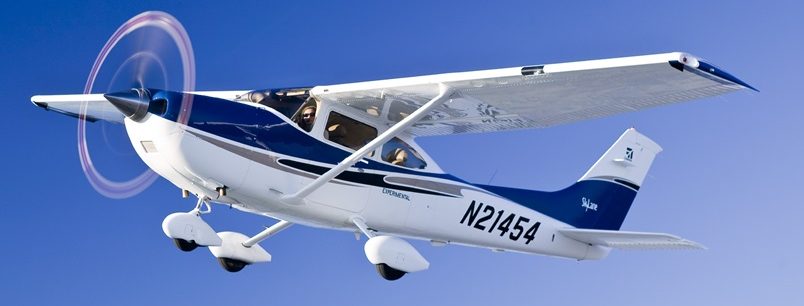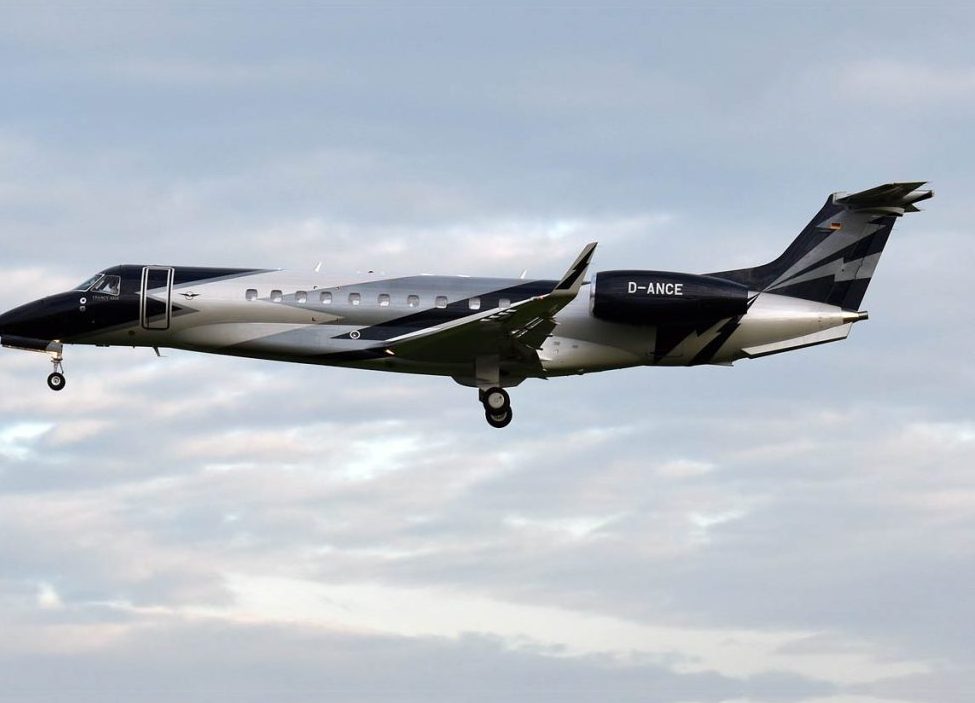The Impact of Economic Cycles on Private Jet Sales: Insights for Buyers and Sellers
Welcome to a comprehensive exploration of the fascinating relationship between economic cycles and private jet sales. This article aims to uncover the intricate nexus of influences within economic cycles and how they invariably impact the private jet market, posing opportunities or challenges for both buyers and sellers. Whether you’re a potential buyer looking for panoramic investment insights or a current owner considering market trends for an advantageous, informed sale, our discussion will equip you with a deeper understanding of the strategic dynamics involved. We’ll delve into areas such as key economic indicators, the impact of economic downturns and advancements in jet technology, all designed to illuminate your path in the intriguing world of private aviation.
Introduction
The role of economic cycles on private jet sales is a topic that intersects two vibrant fields of expertise – economics and aviation. With their seemingly exclusive realms, it might be a wonder how such a correlation exists. However, if we delve deeper into the nuances of private jet sales, the shadows of fluctuating economic cycles become increasingly apparent. In this analysis, we aim to enlighten potential buyers, sellers, and enthusiasts alike about the intriguing dynamics of economic cycles and how they influence private jet sales worldwide.
Through a set of systematic sections, we’ll explore economic cycles and their direct impact on the private jet market, take a look at past trends, and discuss how key economic indicators affect jet sales. Besides, we will also dissect how economic downturns can change buyer demographics, the role high-net-worth individuals play in this market, and corporate demand for jets amid economic uncertainty.
Further, we will delve into the specifics such as regional differences in economic impact, technological advancements shaping the market, environmental factors, crucial strategies for buyers and sellers, and much more. By the end of this journey, we hope to present a well-rounded perspective that provides valuable insights for anyone interested in the private jet market.
Let’s get started by understanding the economic cycles and their profound influence on the market trends of private jet sales.
Overview of Economic Cycles
Economic cycles constitute a fundamental reality in any market, including the aviation sector. Thus, it is indispensable for aircraft buyers and sellers to understand what they entail.
Definition of Economic Cycles
An economic cycle refers to the natural fluctuation of the economy between periods of expansion (growth) and contraction (recession). These cycles are driven by many forces, including interest rates, consumer confidence, and government spending. The most recognized economic cycles are boom and bust cycles, where the economy expands and contracts cyclically.
Key Phases and Characteristics
Identifying the phases of an economic cycle can help investors and businesses navigate market conditions more effectively. There are four key phases in an economic cycle: expansion (occurs when the economy is growing at a sustainable rate), peak (represents the height of an expansion phase), contraction (a slowdown in the pace of economic activity), and trough (the lowest stage of an economic cycle).
Each phase presents different characteristics. During expansion, there’s high employment rates, buoyant consumer confidence, and businesses are making profits. At the peak, the economy is at its highest point, but warning signs of a downturn may be evident. During contractions, unemployment rises, and gross domestic product decreases. The trough phase represents the recession’s end and the start of a new expansion.
Examples of Past Economic Cycles
Two notable economic cycles in the 21st century have significantly impacted aviation, including the private jet industry. These are the financial crisis of 2008 and the COVID-19 pandemic-induced economic crisis. Both events led to market downturns and significantly affected the private jet market, only for it to rebound with the start of a new economic cycle.
How Economic Trends Directly Impact the Private Jet Market
Economic trends play a significant role in shaping the global private jet market. Understanding how these trends influence the industry can give buyers and sellers alike a distinct competitive edge.
When the economy is in an upswing or boom phase, the demand for private jets often increases. Wealthier individuals and corporations are likely to have more disposable income during these periods, which allows for higher spending in luxury and convenience items such as private jets. It is during such prosperous periods that new models and innovations in the private jet market are often unveiled, enticing potential buyers to invest.
During economic recessions or downturns, the private jet market can experience a different kind of shift. The demand for new private jets may decrease as potential buyers reign in their spending. However, these periods can also see an increase in the demand for pre-owned jets or rentals, as they can offer a more economical solution for maintaining the conveniences of private flight without the high costs of brand-new models.
The volatility in the global economy can also lead to fluctuations in commodity prices, such as oil. These fluctuations can affect the operational costs of private jets, which in turn can influence the buying decisions of potential customers.
In addition, economic trends also have an international aspect. For instance, rising economies around the world result in the emergence of new wealthy individuals and businesses, creating new markets for private jets.
In summary, economic trends have a direct impact on various aspects of the private jet market – from customer demands and sales numbers, to types of preferred aircraft and regional market growth. Being aware of these trends can allow both buyers and sellers in this market to make informed decisions and maximise their investments.
Importance of Understanding These Dynamics for Buyers and Sellers
When considering the private jet sales market, it is crucial for both buyers and sellers to comprehend the influence that economic cycles can have. From a buyer’s standpoint, understanding economic cycles can provide crucial insights about the most opportune times to make a purchase, maximizing their buying power and helping them get the most out of their investment. For instance, during an economic boom, increased liquidity can make it easier to obtain financing, while downturns may offer the chance to secure private jets at lower prices due to reduced demand.
On the other hand, sellers need to be acutely aware of these cycles to position their aircraft effectively in the marketplace. The sales strategy needed during an economic downturn differs greatly from one that will thrive during a period of economic expansion. Recognizing where we are in an economic cycle can help sellers determine the right pricing strategy, identify potential buyers and intelligently navigate shifts in the market.
Furthermore, understanding these dynamics can arm both buyers and sellers with the necessary information to negotiate better terms and make more informed business decisions. For instance, a seller aware of an imminent economic downturn may choose to expedite their sales process, while a buyer could leverage the knowledge of an upcoming economic upswing to negotiate terms that would provide for a potential increase in the aircraft’s value down the line.
In essence, understanding how economic cycles impact the private jet sales market can guide both buyers and sellers towards making strategic, data-informed decisions. A deep understanding of the dynamics of economic cycles in relation to the private jet market leads to wiser investments, successful transactions, and ultimately, a higher likelihood of achieving desired financial and personal objectives.
Historical Trends in Private Jet Sales
Over the past few decades, the private jet market has demonstrated a considerable sensitivity to both global and regional economic shifts. The economic stability or turbulence of a particular era has been mirrored in jet sales, thus making these historical trends an important consideration for potential investors.
Response to Past Economic Booms
Often, during periods of economic growth and stability known as ‘booms’, there is a notable surge in private jet sales. The prosperity of this phase fosters an ideal climate for discretionary spending, enabling more companies and high-net-worth individuals (HNWIs) to invest in private aviation. A prominent example of this trend was the dot-com boom of the late 1990s and early 2000s. The unprecedented growth in technology companies brought about new wealth, leading to a spike in demand for private jets as a means of efficient and luxurious travel.
Recent years have not been an exception. In the period leading up to the global financial crisis of 2008, there was a noticeable uptick in private jet sales, reinforcing the positive correlation between strong economic performance and increased demand for business aviation.
Effect of Recessions on Jet Markets
However, this positive reaction to economic booms is often followed by a sharp decline during periods of economic recession. The 2008 global financial crisis stands as perhaps the clearest example of how significantly private jet sales can plummet during a recession. As companies faced financial strain and individuals experienced decreased wealth, the private jet market saw a considerable drop. Despite the initial outlook for a devastating long-term effect on private jet sales, the industry witnessed a steady recovery in the following years.
The impact of recessions on jet markets is not solely negative. It’s important to consider that these periods often lead to increased activity in the pre-owned jet market. As demand for new aircraft declines, some buyers look to more affordable options in the used market.
In conclusion, understanding historical trends and economic cycles provide invaluable foresight for investment in the private jet market. These insights enable informed decision-making, especially when planning for long-term strategies and risk management in both periods of economic growth and recession.
Key Economic Indicators Influencing Private Jet Sales
The private jet industry is not an isolated entity; it sways according to economic indicators. The sale of private jets is significantly impacted by these metrics, shaping its movement and predictability. Understanding these key economic indicators can provide buyers and sellers with crucial insights into market trends.
GDP Growth Rates
Gross Domestic Product (GDP) growth rates can significantly influence private jet sales. This is a broad measure of an economy’s overall wellness and expansion. Aircraft acquisitions often represent large capital investments and are more likely to occur during periods of economic growth.
Conversely, during periods of slow or negative GDP growth, sales tend to stagnate or decrease because prospective buyers may cut back on large expenditures for non-essential goods like private jets.
Stock Market Performance
Another economic indicator that has a substantial impact on private jet sales is the performance of the stock market. When there’s an uptick, high-net-worth individuals and corporations often feel more economically secure, leading to elevated spending on comfort-inducing luxuries, including private jets.
On the flip side, when the stock market encounters a slump, this results in investors becoming more cautious about their spending habits, which in turn can lead to a decrease in private jet sales.
Inflation and Interest Rates
Inflation and interest rates directly correlate with the affordability of private jets. The cost of borrowing becomes steeper during periods of high inflation and increased interest rates, discouraging potential buyers from financing a private jet.
On the other hand, relatively low inflation and interest rates can make it more attractive to borrow for significant capital purchases, like private jets, leading to an upswing in sales.
Corporate Profits and Spending Trends
The health of the corporate sector significantly influences private jet sales. Corporate profits and spending trends can facilitate or hinder jet sales. When businesses are profitable, they are more likely to invest in private jets for efficient travels, contributing to the market’s growth.
In periods of financial downturn, however, corporate spending contracts, causing a downturn in jet sales. Therefore, keeping a tab on corporate finance dynamics can indeed offer credible insights into the private aviation market.
In conclusion, these four pillars—GDP growth rates, stock market performance, inflation and interest rates, and corporate profits and spending trends—are key economic indicators with a direct bearing on private jet sales. Understanding these factors can help buyers and sellers make more informed decisions in the face of a fluctuating economy.
Impact of Economic Downturns
As the world braces itself for the intricate dance of economic cycles, the impact is clearly seen in the private jet sales industry. A holistic understanding of these impacts is crucial for everyone involved, especially sellers and buyers of private jets.
Decline in New Jet Orders
During economic downturns, the first and most obvious impact is a significant decline in new jet orders. The buyer confidence tends to dwindle due to uncertainties associated with economic recessions. During these periods, potential buyers usually adopt a ‘wait and see’ mentality hoping for an economic recovery. Businesses, who form the majority of the customer base, cut down their expenditure and hence, new jet orders dip significantly.
Increased Demand for Pre-Owned Aircraft
Selling or buying a private jet during a recession can have its advantages. Interestingly, while new jet orders may decline during recessions, there’s often an up surge in the demand for pre-owned aircraft. Pre-owned jets offer a comparatively cheaper alternative for buyers seeking to get value for their money when funds are stretched thin. Savvy buyers, looking to leverage on the downturn, can find well-maintained pre-owned aircraft for a fraction of the cost of a new one, leading to a competitive pre-owned market.
Shifts in Buyer Demographics
Economic downturns often lead to shifts in the demographic landscape of jet buyers. For instance, during a recession, corporations might reduce their expenditures leading to lower new jet orders. Conversely, high-net-worth individuals (HNWIs) and ultra-high-net-worth individuals (UHNWIs) might see a downturn as an excellent opportunity to purchase a private jet, thanks to the decreased prices. Given their substantial financial resources, these economic players can weather economic downturns with relative ease and leverage on downturns to make strategic acquisitions.
In conclusion, understanding these impacts not only allows current and potential owners to navigate safely through economic downturns, but it also presents opportunities to those in a position to leverage the downturn to their advantage.
High-Net-Worth Individuals (HNWIs) as Key Market Drivers
High-Net-Worth Individuals (HNWIs) form a significant group driving private jet sales. Their economic behavior and decisions, especially during varying economic cycles, can have a major impact on the state of the business aviation industry.
Spending Patterns During Economic Phases
HNWIs exhibit unique spending patterns during different phases of the economic cycle. During periods of economic expansion or boom, there is typically a significant influx of wealth, leading to increased acquired capital by these individuals. Consequently, the demand for private aircraft tends to surge, resulting in increased sales.
However, during periods of economic downturn or recession, while the average person may cut back on spending, the spending habits of HNWIs can often remain relatively stable. This resilience in luxury spending is attributed to the protective padding their wealth offers against immediate effects of a downtrodden economy. Even though new jet sales might slow down, the pre-owned market could potentially see a boost.
Investment in Private Aviation During Downturns
Investment in private aviation by HNWIs during downturns provides a crucial lifeline to the industry. Despite the tightened purse strings during these periods, the appeal of private jets for the HNWI remains high. Reasons for this can range from the attractive prices for pre-owned aircraft during these times, to the added value of privacy, comfort, time-efficiency, and prestige associated with owning a private jet.
Moreover, HNWIs might view the downturn as an optimal time to invest, banking on the cyclical nature of the economy – when the economy recovers, the value of their investment could increase. Therefore, their demand for private jets continues to provide some level of stability for the industry, even in the midst of an economic slowdown. Given this, sellers in the private jet market are consistently strategizing their sales approach to cater to the tastes and preferences of these wealthy individuals.
Corporate Demand for Business Jets
Corporate demand for business jets greatly fluctuates with the ebb and flow of economic cycles. It is often closely tied to the overall health of the economy, and the scope and health of industries that form the backbone of a nation’s economic structure.
Changes in Corporate Travel Budgets
During strong economic times, companies typically expand their budgets for travel given the increased need for face-to-face meetings, securing deals, and scouting new business opportunities. The commodity of time becomes dearer, and private jets serve as an effective tool for top executives and sales teams to meet their demanding travel schedules.
Furthermore, a robust economy often translates into greater profits, giving corporations the financial capabilities to afford private jets. In contrast, in times of economic downturns, such as during recessions, corporate travel budgets often take the hardest blow.
Companies restrict their spending patterns, cut-down on non-essential travel, and emphasize cost-saving measures. Layoffs and cost-cutting measures may leave executive teams with fewer resources, hampering their ability to justify the high costs associated with private jet travel. During such times, corporations are more likely to pull back from private jet usage and look for more economical alternatives.
Adaptation of Private Jet Usage
Emerging trends and innovative offerings in the business aviation sector often allow companies to adapt to changing economic conditions. As the economy contracts, private jet leasing and fractional ownership become more popular. These offer companies access to private jet travel without the hefty financial commitment of outright ownership.
In essence, dealing with economic fluctuations often involves pivoting strategies and exploring flexible solutions. This may include shifting from full ownership to leasing or fractional ownership models, to shared charter flights. The goal is to still enjoy the benefits o









